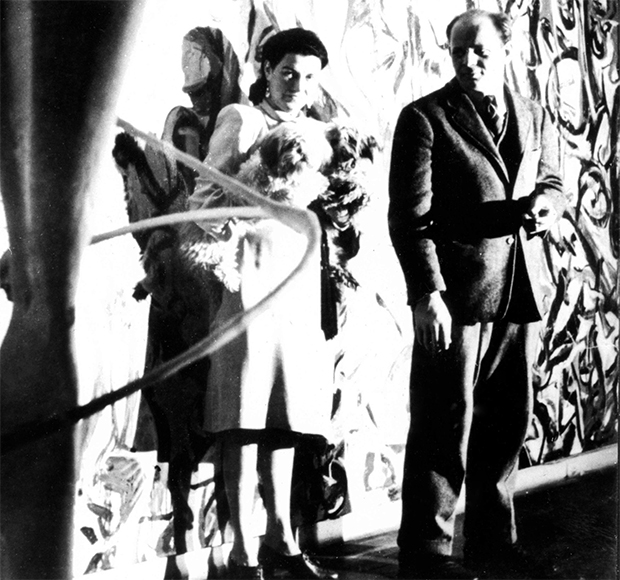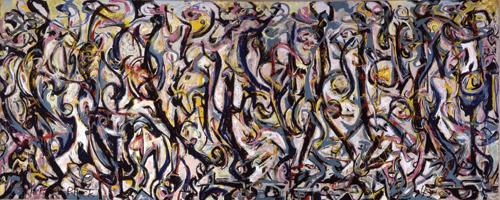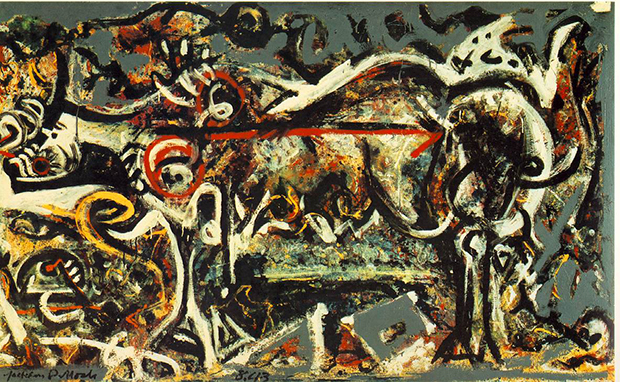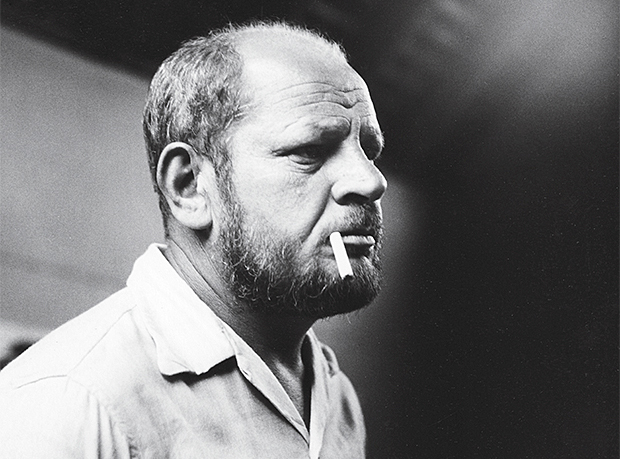
How Peggy Guggenheim made Jackson Pollock
As Pollock's mural for Peggy heads to London we look at how it ushered him into the ranks of the avant-garde
The American heiress, Marguerite "Peggy" Guggenheim was one of the few art collectors who became almost as famous as the artists she patronised. She used her inheritance to amass one of the greatest collections of early modernist European art during the 1920s and 30s; she married the Dadaist painter Max Ernst; befriended Man Ray and Marcel Duchamp; staged exhibitions by Picasso and Kandinsky, and commissioned one of Jackson Pollock's greatest works.
This mural, created in 1943 for Peggy's New York town house has been described by the acclaimed abstract-expressionist curator and Phaidon author David Anfam as Pollock's "Pillas of Hercules", ahead of its loan to London's Royal Academy for a forthcoming abstract Expressionism retrospective later this year.
Here’s how author Helen A Harrison describes Pollock and Peggy's friendship, as well as the creation of that work, in our Phaidon Focus title Jackson Pollock. “In July 1941 Peggy Guggenheim returned to her native New York City and displayed her collection in a museum-cum-gallery, Art of This Century. It opened in October 1942 as a venue for her collection and a showcase and salesroom for the emerging American vanguard, especially those with Surrealist tendencies.

“Encouraged by trusted advisors, Guggenheim chose Jackson Pollock as a protégé, paying him a monthly allowance. She also commissioned him to paint a mural for her town house – a test that, as he wrote to his brother Charles, was ‘exciting as all hell’."
Guggenheim's friend Marcel Duchamp advised her to commission the work on canvas, rather than on the wall itself, so that the painting might be portable, and so could be shown elsewhere. This tip proved prophetic.
“The mural was a leap forward for Pollock, and not only in aesthetic terms. Although it was indeed a major advance in his progress towards a distinctive personal style, it also signalled the commitment of a prominent tastemaker. With Guggenheim as his patron, Pollock joined the ranks of an avant-garde that was taken seriously by the critics, collectors and curators whose opinions mattered. Even MoMA, which favoured the innovative European modernists over their American followers, agreed to buy a sizeable painting, The She-Wolf, from his debut solo exhibition.

“‘When I first exhibited Pollock,’ Guggenheim later wrote, ‘he was very much under the influence of the Surrealists and of Picasso. But he very soon overcame this influence, to become, strangely enough, the greatest painter since Picasso.’
Not all critics were quite so effusive. Yet Pollock’s inclusions in Guggenheim’s 1942 ‘Spring Salon for Young Artists’ generated some portentous earlier notices. The New Yorker’s Robert Coates wrote that “in Jackson Pollock’s abstract “Painting” [Stenographic Figure], with its curious reminiscences of both Matisse and Miró, we have a real discovery’”; while the great American critic Clement Greenberg wrote that Pollock’s works were ‘among the strongest abstract paintings I have yet seen by an American.’”

Indeed, Greenberg later altered his opinion of Pollock after viewing the 1943 mural. The critic would later recall, when first seeing the canvas, "I took one look at it and I thought, 'Now that's great art,' and I knew Jackson was the greatest painter this country had produced."
For more on the life and work of Jackson Pollock buy this Phaidon Focus book; for more on American modernism get Modern Art in America; and if you fancy starting a collection, consider investing in a copy of Collecting Art for Love, Money and More and take a look at the work availabe on Artspace.